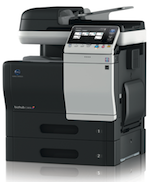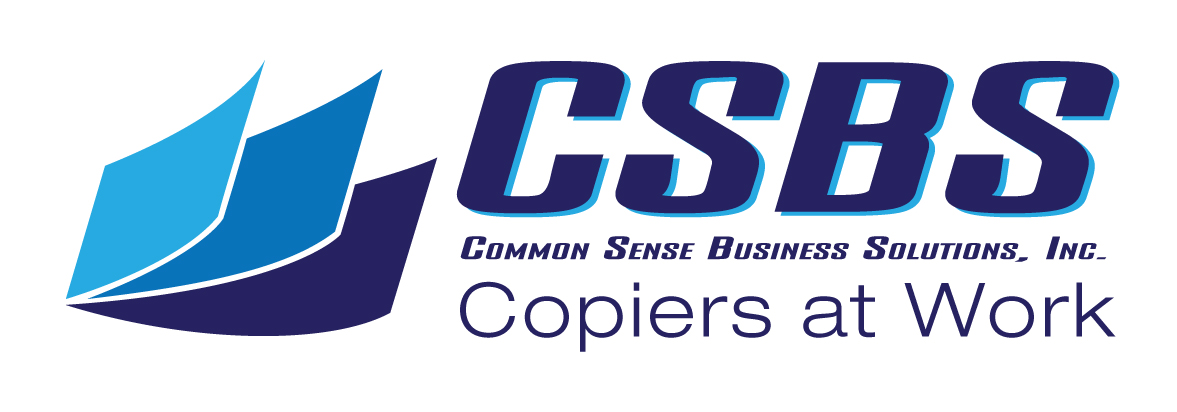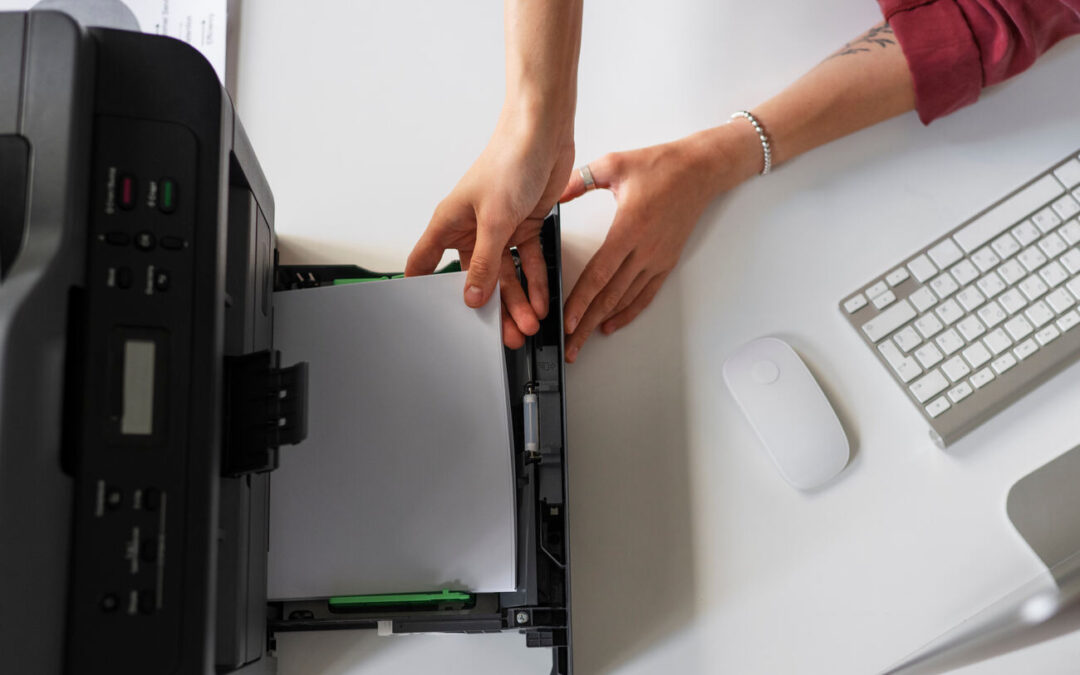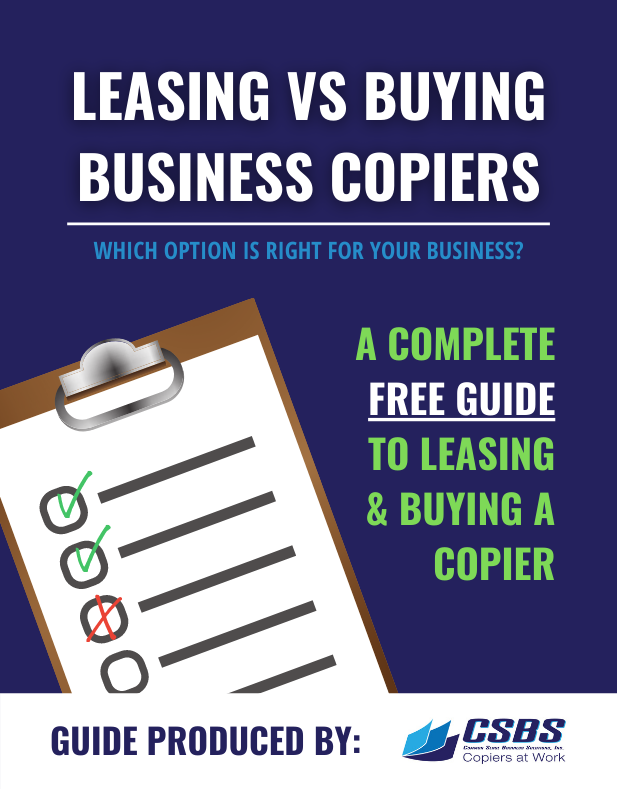Many organizations use their business copier machines more and more for document scanning. It seems as though every company and organization is making an effort to do more scanning. There are a number of features available on most copier machines that make this scanning easier and more efficient. Review the list below to learn about the scanning capabilities that can benefit your organization.
Dual Side Scanning of 2 sided documents
Many of the copier machines being manufactured today, have optional document feeders that will scan both sides of a 2 sided original in a single pass through the feeder. Not only does this single pass scanning double the speed in which you can scan 2 sided originals, it also improves the reliability of the scanning process. This is achieved by eliminating the cumbersome step of having to turn over and re-feed documents back through the document feeder, to scan the second side of the original. If your company works with a lot of 2 sided documents you may want to investigate a machine that offers this dual side scanning.
Job Building
Frequently companies have a need to scan multiple documents that can’t be run through the automatic document feeder such as checks, time cards, receipts and individual pages of a book or bound set of copies. Many copier machines offer the ability to job build or separately scan individual items and then combine these individual items into a single PDF file that can be sent to the scan folder.

Encrypt and Password Protect Scanned Documents
Many of the documents being scanned today are of a sensitive and confidential nature. In addition many companies have HIPPA compliance issues that require certain type of documents to be encrypted and or password protected. Most copier machines have the ability to encrypt and or password protect scanned documents during the scanning process.
Name Your Documents as They Are Scanned
Frequently organizations have multiple users scan documents into a shared scan folder on a server. This can be confusing when attempting to locate a specific scanned file. This is because most copier machines assign a generic file name when scanning unless directed otherwise. Fortunately, most copier machines have the ability to assign a name to documents as they are being scanned simplifying the task of locating a specific document in a shared folder environment.
OCR – Optical Character Recognition
With all of the scanning being done by many companies today, it can become more and more challenging to find a specific document among the many thousands of files saved on a server or computer. Many copier machines offer an optional feature called Optical Character Recognition (OCR) at the time of scanning. OCR will create a PDF document that can be located by searching for any word or phrase contained within a document. Without using OCR feature a PDF document is only an image file and is not search-able by the content within the document. OCR can greatly improve the speed in which organizations can locate specific files stored on their servers.
If your organization is one that is scanning and archiving more and more documents then you might benefit from some or all of the features outlined above. There are additional ways that you can improve the speed, quality, editing and search ability of your documents. Contact us your copier machine provider to learn more about how we can best support your scanning needs.
Frequently Asked Questions about Copier Machines and Scanning Capabilities
1. How does dual-sided scanning on copiers improve efficiency?
Dual-sided scanning, also known as duplex scanning, allows copier machines to scan both sides of a document in one pass. This feature eliminates the need to manually flip pages, doubling scanning speed and reducing errors. Studies show that businesses can save up to 50% of time with this feature compared to manual scanning.
2. What is job building in copier machines, and why is it useful?
Job building allows users to scan multiple items, like receipts, checks, or pages from bound documents, and combine them into a single PDF file. This feature is beneficial for companies that handle different document formats but want them compiled in one cohesive file, streamlining the scanning process.
3. Can copier machines encrypt and password protect scanned documents?
Yes, many copier machines offer the ability to encrypt and password-protect scanned documents. This is crucial for businesses handling sensitive information, such as healthcare companies that must adhere to HIPAA regulations. Encrypted documents ensure that only authorized users can access confidential files.
4. Is it possible to name documents during the scanning process?
Yes, most modern copiers allow you to assign a name to each document as it’s being scanned. This feature helps businesses keep their scan folders organized, reducing time spent searching for specific files. It’s especially useful in shared folder environments where multiple users are scanning into the same location.
5. How does Optical Character Recognition (OCR) enhance document searchability?
OCR converts scanned documents into searchable PDFs by recognizing and indexing text within the document. This means you can locate specific files by searching for keywords or phrases within the document. According to studies, businesses can improve document retrieval times by up to 70% when using OCR.
6. How can copiers help organizations with HIPAA compliance?
Copiers that offer encryption and password protection for scanned documents can help businesses meet HIPAA standards. These features ensure that sensitive patient information remains confidential during the scanning process, reducing the risk of data breaches.
7. What types of documents benefit most from job building features?
Documents that are non-standard in size, like receipts, checks, and time cards, greatly benefit from the job building feature. This allows businesses to scan these smaller items and merge them into one organized file without having to manually scan each piece separately.
8. Can small businesses benefit from dual-sided scanning?
Absolutely. Dual-sided scanning saves time and improves workflow, which is essential for small businesses with limited staff. It cuts the scanning time in half and minimizes manual handling of documents, allowing employees to focus on other tasks.
9. Is OCR available on all copier machines?
OCR is typically an optional feature on many copier machines. While not standard, it can be added to enhance the document search capabilities of scanned files. Companies scanning large volumes of documents often find OCR invaluable for quick file retrieval.
10. What are the security risks of scanning sensitive documents, and how can they be mitigated?
Scanning sensitive documents can pose risks if files are not properly encrypted or password-protected. Copier machines with built-in security features like encryption and user authentication help mitigate these risks, ensuring that scanned documents remain confidential.




